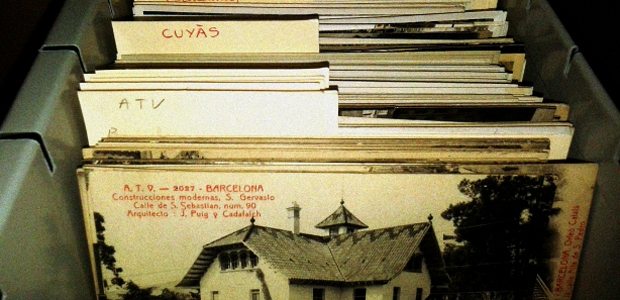The oldest postcard circulated in Spain was issued in 1892. At the end of the 19th century, the Universal Postal Union regulated the format –9 x 14 cm– which was maintained until 1960, approximately, even though modern postcards are a little bigger. The first ones, published by the post office administrations, were very monotonous but the improvement of the printing methods achieved during the last decade of the 19th century, led to postcard collecting becoming a fashion.
The Library of the Museu Nacional conserves a collection of 20,000 postcards that were introduced in 1957 thanks to the legacy of Enrique Matas-Ramis. We are currently working on the classification and description in accordance with the guidelines 1-60 for the cataloguing of special collections and personal collections, with the aim of giving visibility to our collection by means of the introduction in the portal of the Catalonia Libraries Special Collections.
At present, the old postcards are immersed in a process of revaluation as a source of research, because they provide a specific vision and a series of difficult qualitative details to observe in other documentary collections. An excellent example is constituted by series Barcelona. Modern Constructions by the editor Àngel Toldrà Viazo. These images represent a splendid testimony of the Barcelona of the 19th century and allow us to recreate the city of one hundred years ago. The most singular buildings by recognised Catalan architects can be found, some of which will be professionally revitalised in the well-known Block of Discord: Lluís Domènech i Montaner, Antoni Gaudí and Josep Puig i Cadafalch.
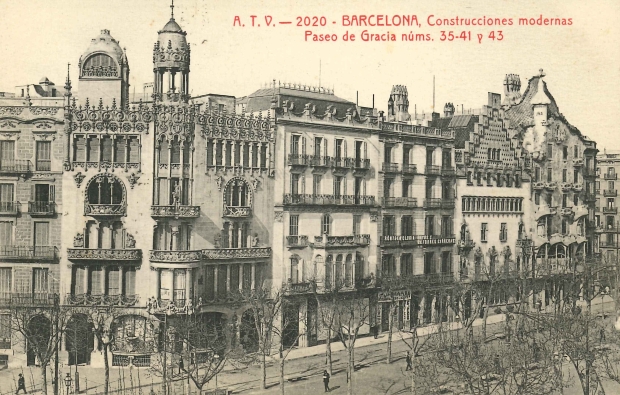
Image of the Block of Discord with the Casa Amatller by Puig i Cadafalch, the Casa Batlló by Gaudí and the Casa Lleó Morera by Domènech i Montaner.
The photos «talk» to us and provide complementary information that we cannot find in other documents. On the postcard of the Casa Lleó Morera we can see the sculptures of the ladies with the gardeners, the work of Eusebi Arnau, which disappeared in a reform of 1943.
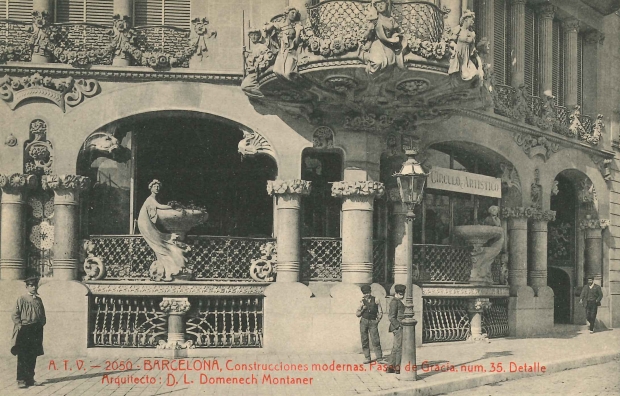
Image of the Casa Lleó Morera.
Furthermore, we are turned into spectators of scenes of daily life, such as those produced between three people in front of the façade of the Palau Güell, by Gaudí. Moreover, in the postcard, we can appreciate the large gates of forged iron and the coat of arms of Catalonia with the helmet and the dragon, by Joan Oñós.
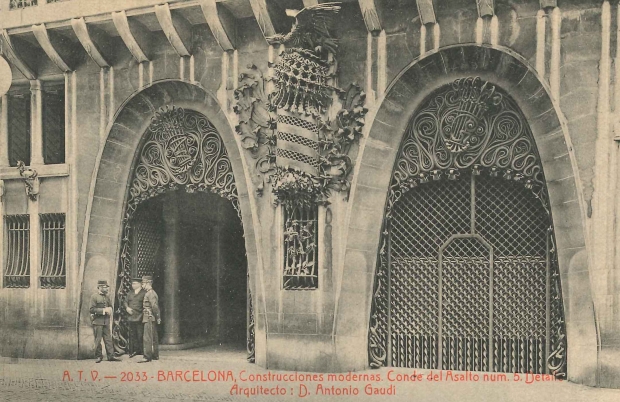
Main façade of the Palau Güell.
Finally, the constructions which have now disappeared are graphic testimonies, such as the cases of the Casa Capellas and the Casa Llorach by Puig i Cadafalch.
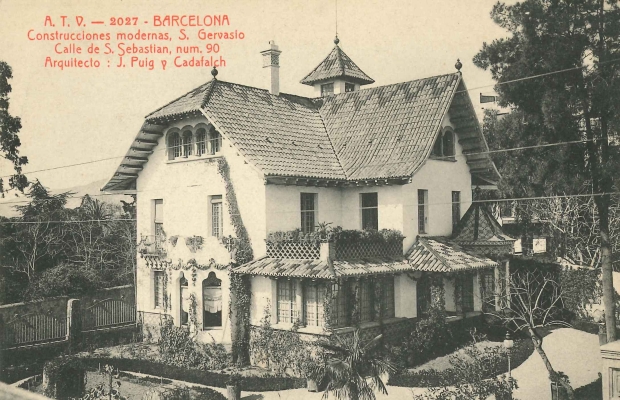
Casa Capellas.
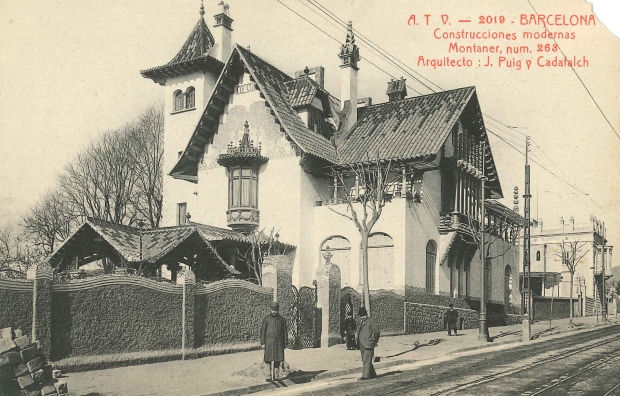
Casa Llorach.
Biblioteca

